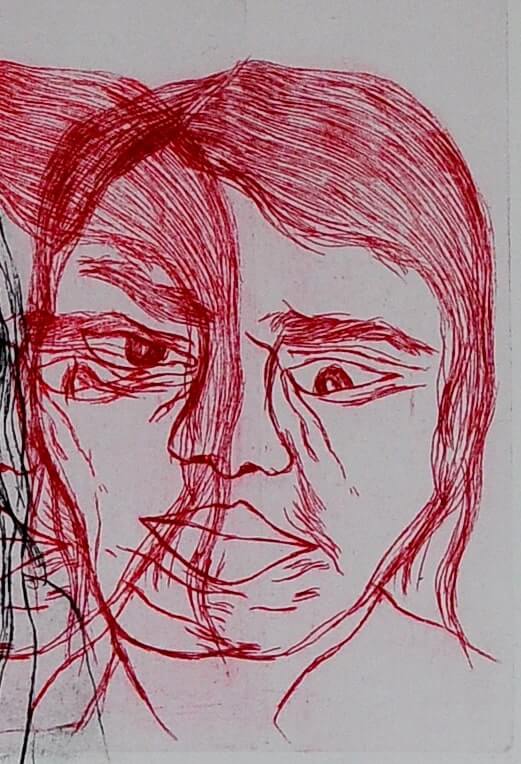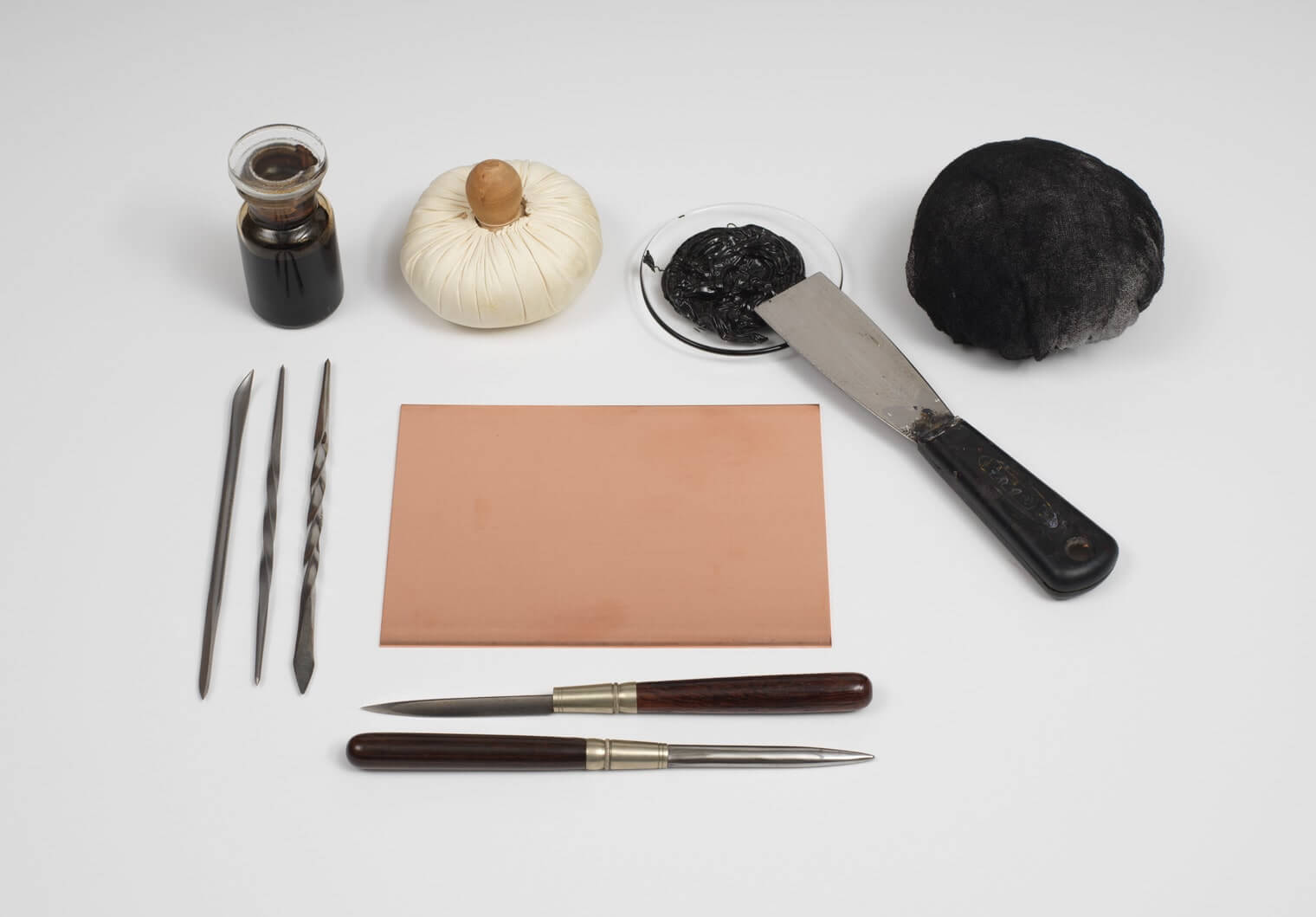
Etching is an intaglio printmaking process in which lines or areas are incised using acid into a metal plate in order to hold the ink. In etching, the plate can be made of iron, copper, or zinc. To prepare the plate for etching, it is first polished to remove all scratches and imperfections from the surface. When the surface is completely smooth, it is covered evenly with a layer of acid-resistant varnish or wax, which is called the ground. Ground is dark brown in color.
Using a blunt stylus called an etching needle, the printmaker gently scratches away parts of the ground following the design, thereby exposing the metal beneath.
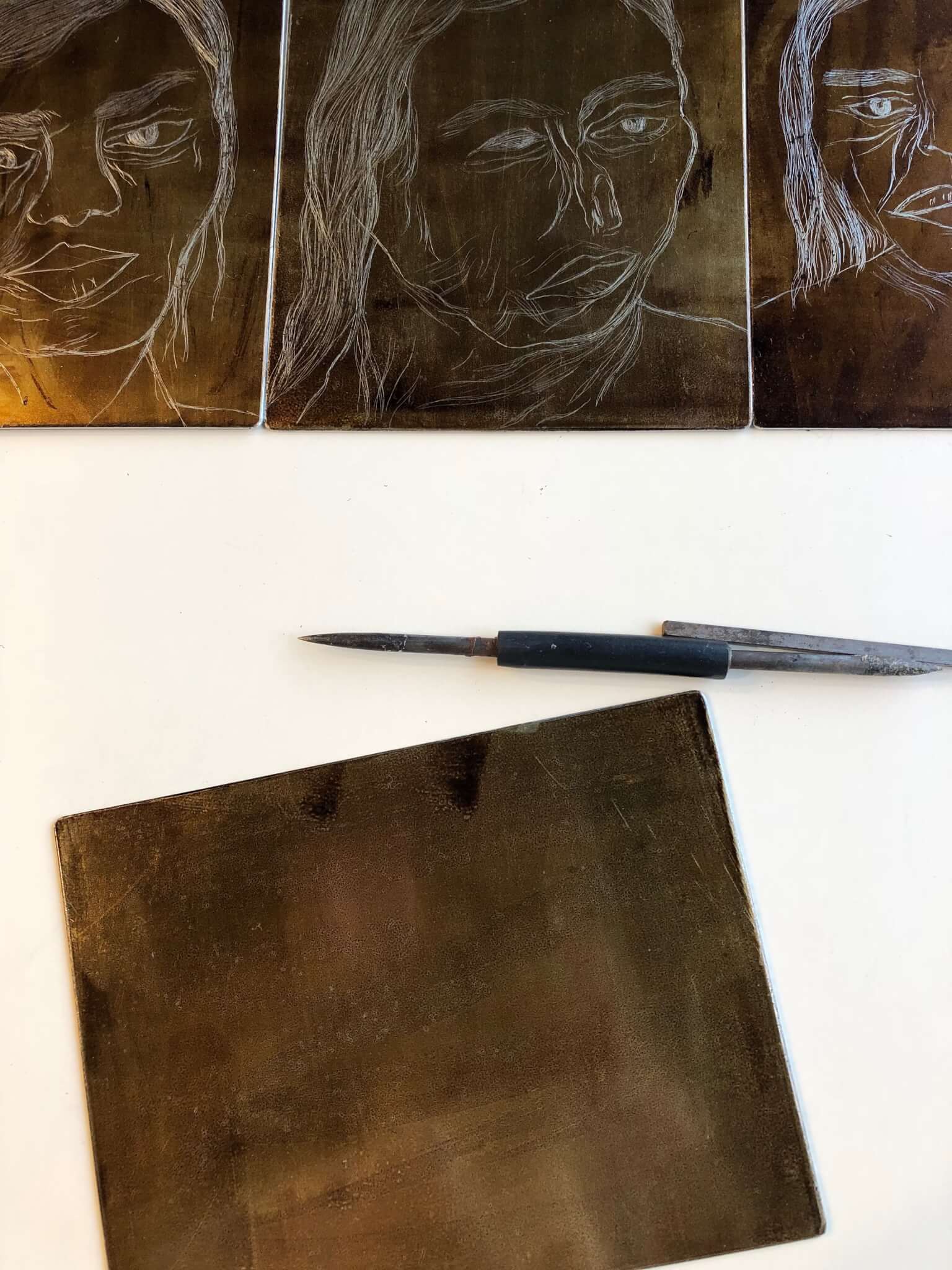
Then the plate is dipped in an acid bath. The exposed drawing on the metal gets etched. The depth and width of these recesses is determined by the length of time the plate is exposed to the acid: a longer exposure will cause deeper and wider recesses, which hold more ink and will thus print darker lines on paper.
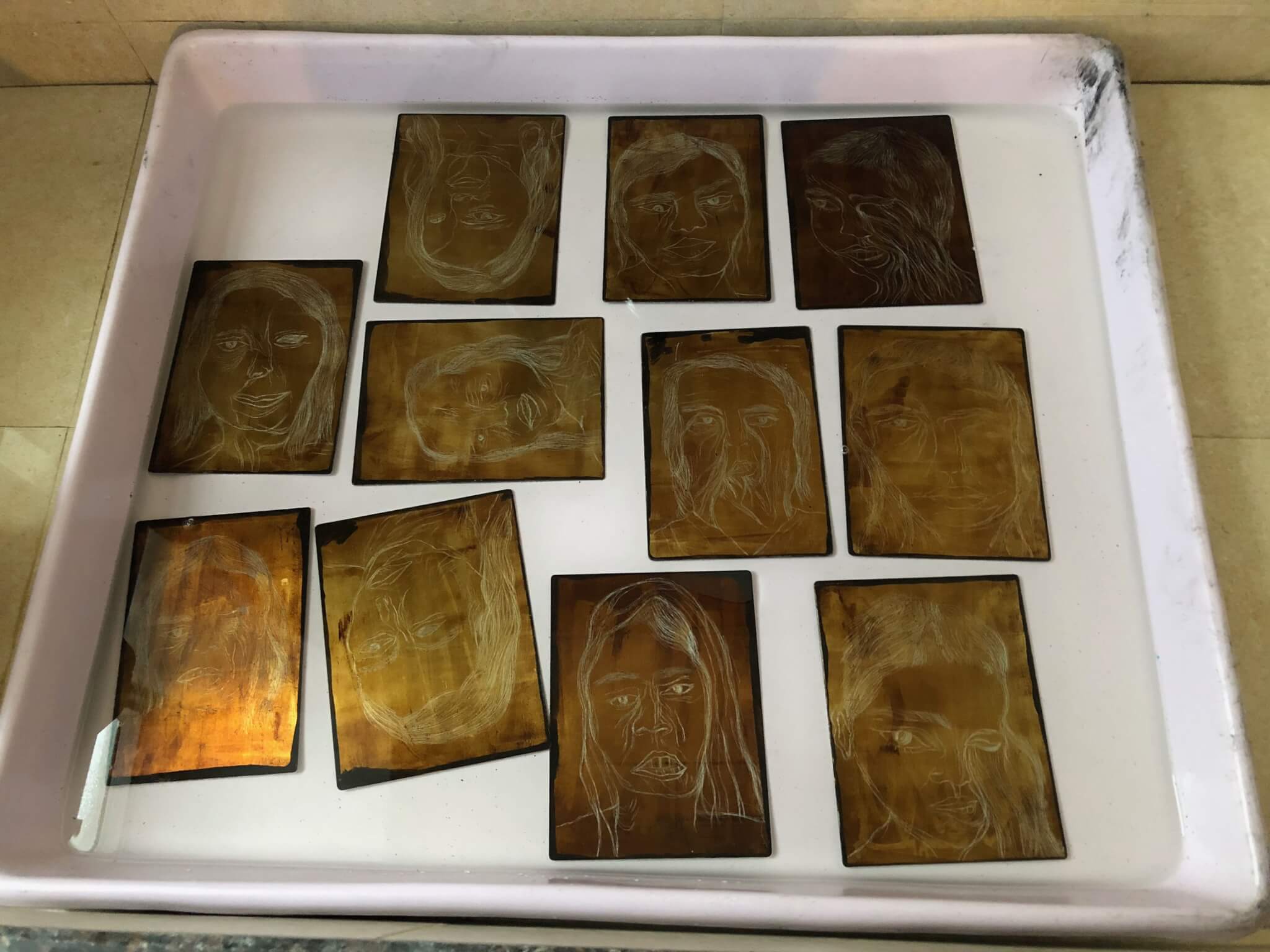
This process can be used to create a nuanced tonal palette. To create darker tones, certain areas can be bathed in acid several times, while lighter areas are protected from further acid bite by covering them with ground. Once the plate has been satisfactorily bitten by the acid, the printmaker removes the ground with a solvent.
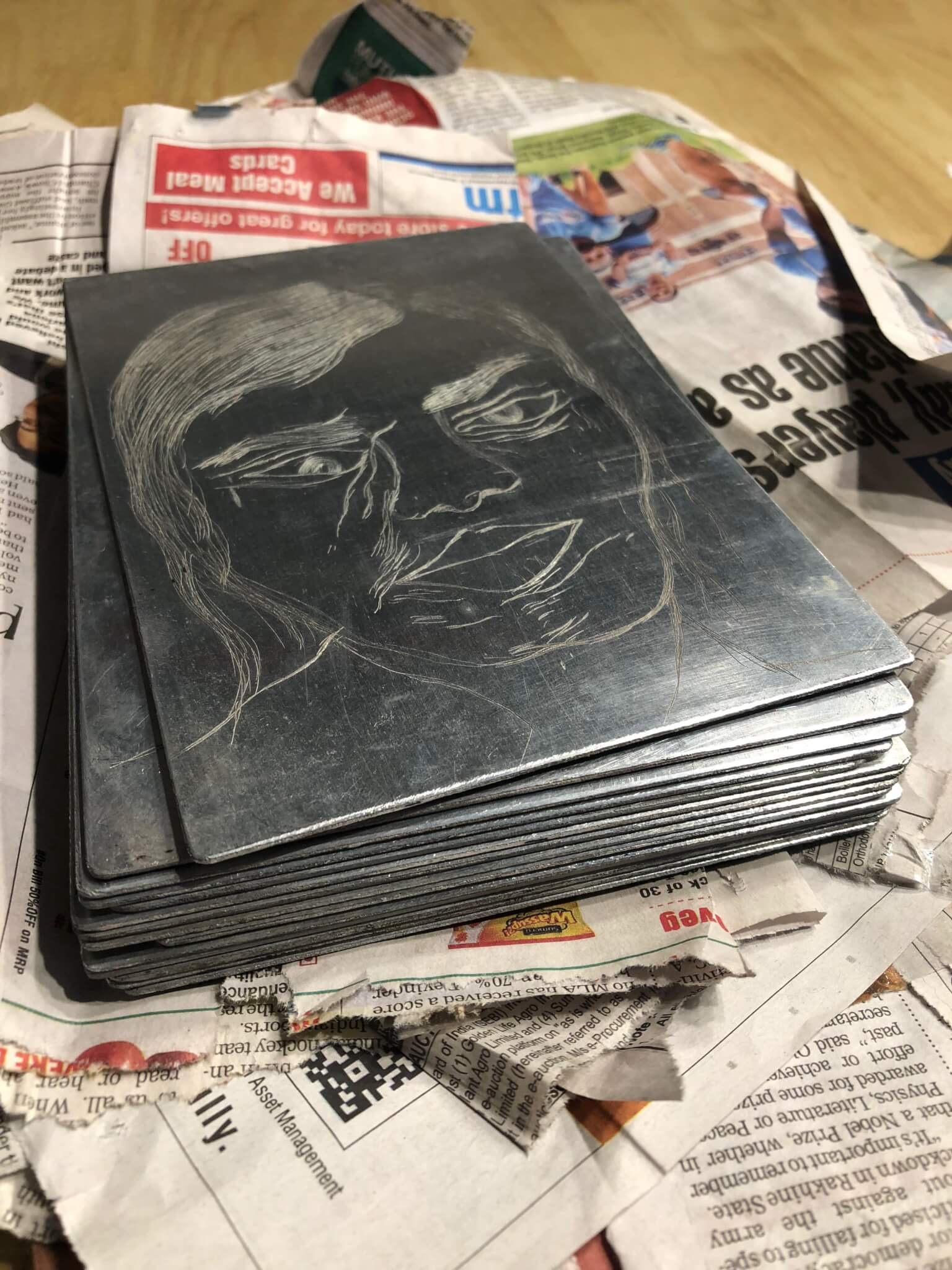
After the ground is removed, the plate is ready for inking. In an intaglio process, the ink is retained in the incised lines. A cloth ball, cardboard tab, or equivalent material is used to gently spread ink across the whole face of the plate; the same material is used to remove most of the excess ink from the surface. The plate is further cleaned using a tarlatan rag (heavily starched cheesecloth).
As a last measure, printmakers often use the sides of their hand to wipe away the last bits of ink. In certain cases, a printmaker can choose not to clean the plate entirely, but to leave a thin layer of ink on the plate to create tone.
Once the surface of the plate is wiped clean to a satisfactory level, the plate is placed on the bed of a rolling printing press, with the ink side up. Although some early intaglio prints appear to have been produced by simply pressing the paper against the plate with one’s hands, in most cases the pressure required to force the paper into the finely cut lines entailed the use of a special press equipped with rollers.
Before the plate is moved through the press, it is covered with a sheet of dampened paper and then printing blankets, often made of felt, to soften the pressure on the metal plate. Once printed onto its paper support, the etching’s design appears in reverse of the original on the plate. The pressure of the press not only forces the ink onto the damp paper, but also produces an outline of the outer edges of the metal plate in the paper, known as a plate mark.
